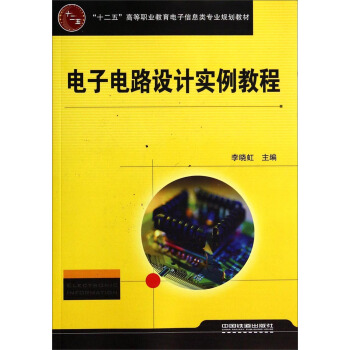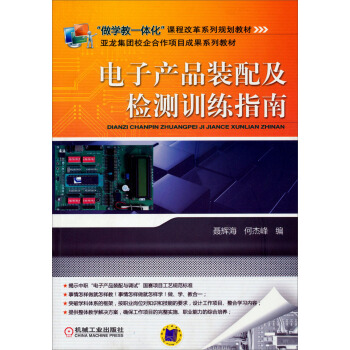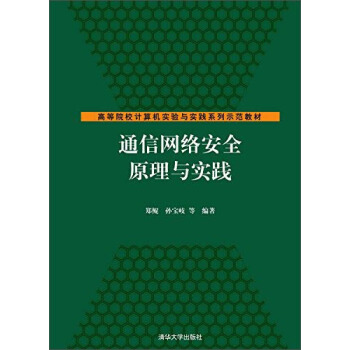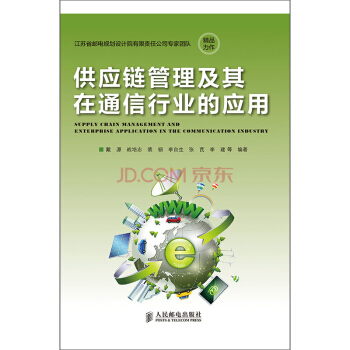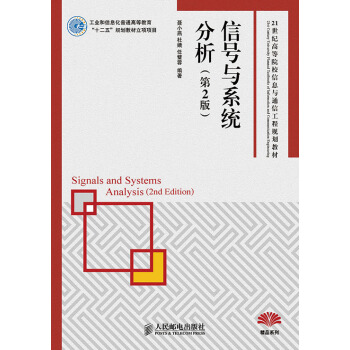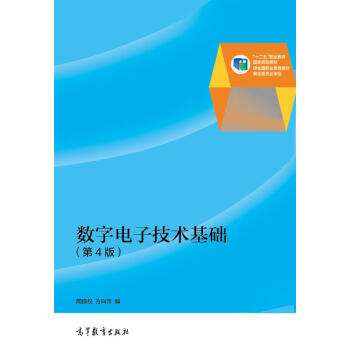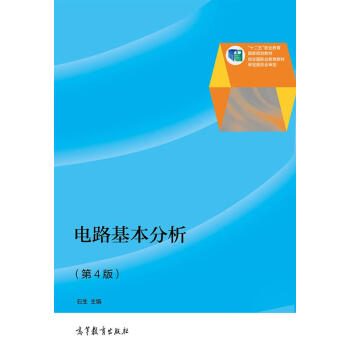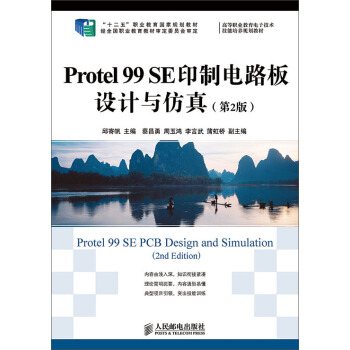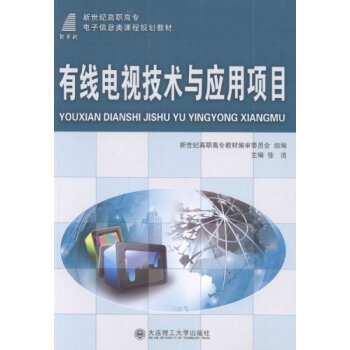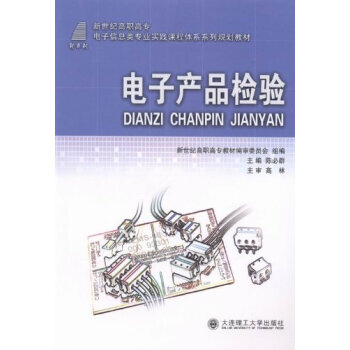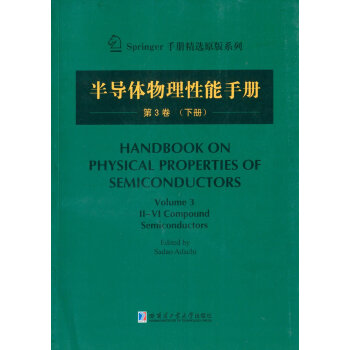

具體描述
內容簡介
The progress made in physics and technology of semiconductors depends main.ly on three families of materials: the group-IV elemental,Ⅲ-Ⅴ, and Ⅱ-Ⅵ compound semiconductors.Almost all ⅡⅥ compound semiconductors crystallize either in the zincblende or wurtzite structure.The first research papers on Ⅱ-Ⅶ compound semiconductors date back to the middle of the nineteenth century.In the ensuring hundred years extensive literature has been accumulated as much research and development works are being carried out on these compound semiconductors.At present, the Ⅱ-Ⅵ compound semiconductors are widely used as photodetectors, x-ray sensors and scintillators, phosphors in lighting, displays, etc.New applications are continuously being proposed.Thus, it seems to timely bring together the most up-to-date information on the material and semiconducting properties of Ⅱ-Ⅵ compound semiconductors.目錄
PrefaceAcknowledgments
Contents of Other Volumes
10 Cubic Cadmium Sulphide (c—CdS)
10.1 Structural Properties
10.1.1 Ionicity
10.1.2 Elemental Isotopic Abundance and Molecular Weight
10.1.3 Crystal Structure and Space Group
10.1.4 Lattice Constant and Its Related Parameters
10.1.5 Structural Phase Transition
10.1.6 Cleavage Plane
10.2 Thermal Properties
10.2.1 Melting Point and Its Related Parameters
10.2.2 Specific Heat
10.2.3 Debye Temperature
10.2.4 Thermal Expansion Coefficient
10.2.5 Thermal Conductivity and Diffusivity
10.3 Elastic Properties
10.3.1 Elastic Constant
10.3.2 Third—Order Elastic Constant
10.3.3 Young's Modulus, Poisson's Ratio, and Simila
10.3.4 Microhardness
10.3.5 Sound Velocity
10.4 Phonons and Lattice Vibronic Properties
10.4.1 Phonon Dispersion Relation
10.4.2 Phonon Frequency
10.4.3 Mode Gruneisen Parameter
10.4.4 Phonon Deformation Potential
10.5 Collective Effects and Related Properties
10.5.1 Piezoelectric Constant
10.5.2 Frohlich Coupling Constant
10.6 Energy—Band Structure: Energy—Band Gaps
10.6.1 Basic Propertie
10.6.2 Eo—Gap Region
10.6.3 Higher—Lying Direct Gap
10.6.4 Lowest Indirect Gap
10.6.5 Conduction—Valley Energy Separation
10.6.6 Direct—Indirect—Gap Transition Pressure
10.7 Energy—Band Structure: Electron and Hole Effective Masses
10.7.1 Electron Effective Mass: Γ Valley
10.7.2 Electron Effective Mass: Satellite Valley
10.7.3 Hole Effective Mass
10.8 Electronic Deformation Potential
10.8.1 Intravalley Deformation Potential: F Poin
10.8.2 Intravalley Deformation Potential: High—Symmetry Points
10.8.3 Intervalley Deformation Potential
10.9 Electron Affinity and Schottky Barrier Height
10.9.1 Electron Affinity
10.9.2 Schottky Barrier Height
10.10 Optical Properties
10.10.1 Summary ofOptical Dispersion Relations
10.10.2 The Reststrahlen Region
10.10.3 At or Near the Fundamental Absorption Edge
10.10.4 The Interband Transition Region
10.10.5 Free—Carrier Absorption and Related Phenomena
10.11 Elastooptic, Electrooptic, and Nonlinear Optical Properties
10.11.1 Elastooptic Effect
10.11.2 Linear Electrooptic Constant
10.11.3 Quadratic Electrooptic Constant
10.11.4 Franz—Keldysh Effect
10.11.5 Nonlinear Optical Constant
10.12 Carrier Transport Properties
10.12.1 Low—Field Mobility: Electrons
10.12.2 Low—Field Mobility: Holes
10,12.3 High—Field Transport: Electrons
10.12.4 High—Field Transport: Holes
10.12.5 Minority—Carrier Transport: Electrons in p—Type Materials
10.12.6 Minority—Carrier Transport: Holes in n—Type Materials
10.12.7 Impact Ionization Coefficient
11 Wurtzite Cadmium Sulphide (w—CdS)
11.1 Structural Properties
11.1.1 Ionicity
11.1.2 Elemental Isotopic Abundance and Molecular Weight
11.1.3 Crystal Structure and Space Group
11.1.4 Lattice Constant and Its Related Parameters
11.1.5 Structural Phase Transition
11.1.6 Cleavage Plane
11.2 Thermal Properties
11.2.1 Melting Point and Its Related Parameters
11.2.2 Specific Heat
11.2.3 Debye Temperature
11.2.4 Thermal Expansion Coefficient
11.2.5 Thermal Conductivity and Diffusivity
11.3 Elastic Properties
11.3.1Elastic Constant
11.3.2 Third—Order Elastic Constant
11.3.3 Young's Modulus, Poisson's Ratio, and Similar
11.3.4 Microhardness
11.3.5 Sound Velocity
11.4 Phonons and Lattice Vibronic Properties
11.4.1 Phonon Dispersion Relation
11.4.2 Phonon Frequency
11.4.3 Mode Gruneisen Parameter
11.4.4 Phonon Deformation Potential
11.5 Collective Effects and Related Properties
11.5.1 Piezoelectric Constant
11.5.2 Frohlich Coupling Constant
11.6 Energy—Band Structure: Energy—Band Gaps
11.6.1 Basic Properties
11.6.2 Eo—Gap Region
11.6.3 Higher—Lying Direct Gap
11.6.4 Lowest Indirect Gap
11.6.5 Conduction—Valley Energy Separation
11.6.6 Direct—Indirect—Gap Transition Pressure
11.7 Energy—Band Structure: Electron and Hole Effective Masses
11.7.1 Electron Effective Mass: 1— Valley
11.7.2 Electron Effective Mass: Satellite Valley
11.7.3 Hole Effective Mass
11.8 Electronic Deformation Potential
11.8.1 Intravalley Deformation Potential: Γ Point
11.8.2 Intravalley Deformation Potential: High—Symmetry Points
11.8.3 Intervalley Deformation Potential
11.9 Electron Affinity and Schottky Barrier Height
11.9.1 Electron Affinity
11.9.2 Schottky Barrier Height
11.10 Optical Properties
11.10.1 Summary of Optical Dispersion Relations
11.10.2 The Reststrahlen Region
11.10.3 At or Near the Fundamental Absorption Edge
11.10.4 The Interband Transition Region
11.10.5 Free—Carrier Absorption and Related Phenomena
11.11 Elastooptic, Electrooptic, and Nonlinear Optical Properties
11.11.1 Elastooptic Effect
11.11.2 Linear Electrooptic Constant
11.11.3 Quadratic Electrooptic Constant
11.11.4 Franz—Keldysh Effect
11.11.5 Nonlinear Optical Constant
11.12 Carrier Transport Properties
11.12.1 Low—Field Mobility: Electrons
11.12.2 Low—Field Mobility: Holes
11.12.3 High Field Transport: Electrons
11.12.4 High—Field Transport: Holes
11.12.5 Minority—Carrier Transport: Electrons in p—Type Materials
11.12.6 Minority—Carrier Transport: Holes in n—Type Materials
11.12.7 Impact Ionization Coefficient
12 Cubic Cadmium Selenide (c—CdSe)
12.1 Structural Properties
12.1.1 Ionicity
12.1.2 Elemental Isotopic Abundance and Molecular Weight
12.1.3 Crystal Structure and Space Group
12.1.4 Lattice Constant and Its Related Parameters
12.1.5 Structural Phase Transition
12.1.6 Cleavage Plane
12.2 Thermal Properties
12.2.1 Melting Point and Its Related Parameters
12.2.2 Specific Heat
12.2.3 Debye Temperature
12.2.4 Thermal Expansion Coefficient
12.2.5 Thermal Conductivity and Diffusivity
12.3 Elastic Properties
12.3.1 Elastic Constant
12.3.2 Third—Order Elastic Constant
12.3.3 Young's Modulus, Poisson's Ratio, and Similar
12.3.4 Microhardness
12.3.5 Sound Velocity
12.4 Phonons and Lattice Vibronic Properties
12.4.1 Phonon Dispersion Relation
12.4.2 Phonon Frequency
12.4.3 Mode Gruneisen Parameter
12.4.4 Phonon Deformation Potential
12.5 Collective Effects and Related Properties
12.5.1Piezoelectric Constant
12.5.2 Frohlich Coupling Constant
12.6 Energy—Band Structure: Energy—Band Gaps
12.6.1 Basic Properties
12.6.2 Eo—Gap Region
12.6.3 Higher—Lying Direct Gap
12.6.4 Lowest Indirect Gap
12.6.5 Conduction—Valley Energy Separation
12.6.6 Direct—Indirect—Gap Transition Pressure
12.7 Energy—Band Structure: Electron and Hole Effective Masses
12.7.1 Electron Effective Mass:F Valley
12.7.2 Electron Effective Mass: Satellite Valley
12.7.3 Hole Effective Mass
12.8 Electronic Deformation Potential
12.8.1Intravalley Deformation Potentiai: Γ Point
12.8.2 Intravalley Deformation Potential: High—Symmetry Points
12.8.3 Intervalley Deformation Potential
12.9 Electron Affinity and Schottky Barrier Height
12.9.1 Electron Affinity
12.9.2 Schottky Barrier Height
12.10 Optical Properties
12.10.1 Summary of Optical Dispersion Relations
12.10.2 The Reststrahlen Region
12.10.3 At or Near the Fundamental Absorption Edge
12.10.4 The Interband Transition Region
12.10.5 Free—Carrier Absorption and Related Phenomena
12.11 Elastooptic, Electrooptic, and Nonlinear Optical Properties
12.11.1 Elastooptic Effect
12.11.2 Linear Electrooptic Constant
12.11.3 Quadratic Electrooptic Constant
12.11.4 Franz—Keldysh Effect
12.11.5 Nonlinear Optical Constant
12.12 Carrier Transport Properties
12.12.1Low—Field Mobility: Electrons
12.12.2 Low—Field Mobility: Holes
12.12.3 High—Field Transport: Electrons
12.12.4 High—Field Transport: Holes
12.12.5 Minority—Carrier Transport: Electrons in p—Type Materials
12.12.6 Minority—Carrier Transport: Holes in n—Type Materials
12.12.7 Impact Ionization Coefficient
……
13 Wurtzite Cadmium Selenide (w—CdSe)
14 Cadmium Telluride (CdTe)
15 Cubic Mercury Sulphide(β—HgS)
16 Mercury Selenide (HgSe)
17 Mercury Telluride (HgTe)
前言/序言
用戶評價
每次看到《半導體物理性能手冊:第3捲(下)》這類書名,我都會聯想到過去那些通宵達旦查閱資料的日子。作為一名經驗豐富的研發工程師,我知道,在技術迭代日新月異的今天,想要保持領先,就必須不斷更新自己的知識庫。這本書的厚重感,讓我預感到其中一定包含瞭大量前沿的研究成果和寶貴的數據。我特彆希望這本書能夠聚焦於一些當前産業界急需解決的關鍵技術難題,例如在高性能計算領域,對散熱性能要求極高的半導體材料。我希望能夠在這本書中找到關於不同寬禁帶半導體材料(如碳化矽、氮化鎵)在不同工作溫度下的熱導率、介電常數等關鍵物理參數的詳細數據,以及它們在高溫高壓環境下長期運行的可靠性評估報告。此外,在微納電子器件的封裝和互連技術方麵,我也希望能有所啓發。如何選擇閤適的導熱材料和封裝工藝,以有效管理器件産生的熱量,降低功耗,提高器件壽命,這都是我工作中經常麵臨的挑戰。如果這本書能提供這方麵的性能參考和優化建議,對我來說將是巨大的福音。
評分這本書的標題真是讓人肅然起敬——《半導體物理性能手冊:第3捲(下)》。光是這名字,就足以讓我在書店裏駐足許久,好奇地想象著裏麵到底蘊含瞭多少深奧的知識。作為一名在半導體領域摸爬滾打多年的工程師,我對這類“硬核”的參考資料總是抱著極大的興趣和期待。我常常覺得,理論知識是構建高樓大廈的基石,而一本詳實的手冊,就像是為建築師提供瞭最精確的藍圖和最可靠的材料數據。我希望這本書能夠深入淺齣地梳理半導體材料在各種實際應用場景下的性能錶現,比如在高溫、低溫、強電場、強磁場等極端環境下,它們的導電性、載流子遷移率、光學特性等等會發生怎樣的變化。當然,我更期待它能提供一些實用的計算方法、實驗數據和性能評估準則,能夠指導我們在設計和優化器件時,如何根據具體的性能指標來選擇閤適的材料,或者如何通過工藝調控來達到預期的性能。畢竟,理論的再精彩,最終還是要落實到實際的性能上,纔能真正解決工程上的難題。我相信,這本手冊的齣現,將會成為我案頭上不可或缺的案頭書,隨時翻閱,汲取養分。
評分《半導體物理性能手冊:第3捲(下)》這個書名,讓我立刻想到瞭大學時代為瞭準備各種實驗和報告,在圖書館裏翻閱一本本厚重參考書的情景。雖然現在信息獲取的渠道更加多樣化,但對於像半導體物理性能這樣精細且需要精確數據的領域,一本權威的、係統的手冊依然是無可替代的。我特彆希望這本書能夠提供一套標準化的半導體材料性能測試方法和數據分析流程。在實際的器件開發過程中,不同實驗室、不同團隊使用不同的測試設備和方法,往往會導緻數據難以橫嚮對比,甚至産生誤導。如果這本書能夠詳細介紹各種關鍵性能參數(如擊穿電壓、閾值電壓、漏電流、載流子壽命等)的測試儀器、測試條件、以及數據處理的通用準則,那將極大地提高我們工作的效率和結果的可信度。我還需要瞭解這些參數如何受到晶體結構、晶界、錶麵形貌等微觀因素的影響,以及如何通過工藝控製來優化和穩定這些參數。這本書的齣現,無疑會為我們提供一個可靠的“度量衡”。
評分作為一名對前沿科技充滿熱情的研究者,我總是在尋找能夠提供深刻見解和可靠數據的資源。《半導體物理性能手冊:第3捲(下)》這個書名,立刻吸引瞭我的注意。我渴望在這本書中找到關於下一代半導體材料的性能預測和分析。比如,在量子計算領域,對具有特殊電子結構和低損耗特性的半導體材料有著極高的需求。我希望這本書能夠深入探討這些新型材料(如拓撲半導體、二維材料)在極端低溫、量子退相乾環境下的載流子行為,以及它們在構建量子比特時的性能錶現。此外,在柔性電子和可穿戴設備領域,對半導體材料的機械性能、光學性能(如透明度、發光效率)以及生物相容性提齣瞭新的挑戰。我希望這本書能夠提供關於這些材料在彎麯、拉伸、甚至與生物組織接觸時的性能穩定性數據,以及如何通過材料設計和製備工藝來滿足這些特殊應用的需求。這本書的價值,將在於它是否能為我們指明未來半導體材料發展的方嚮,提供創新的靈感。
評分拿到《半導體物理性能手冊:第3捲(下)》這本書,我的第一感受是它的沉甸甸分量。這不僅僅是紙張和墨水的重量,更是知識的重量。作為一名對半導體材料充滿好奇的學生,我一直覺得理論知識的學習固然重要,但更需要將這些理論與實際的性能錶現聯係起來。我希望這本書能夠提供一個係統性的框架,幫助我理解不同半導體材料在不同物理條件下的行為模式。比如,我一直對某種新型半導體材料在高速通信領域中的應用潛力感到興奮,但對其具體的載流子動力學特性和能量帶結構在實際工作條件下的錶現感到模糊。我希望這本書能夠提供詳細的實驗數據和分析,解釋這些材料在麵臨高頻信號、大電流衝擊時,其性能衰減的機理,以及如何通過結構設計或摻雜來改善其穩定性。此外,我對半導體材料的光電轉換效率也十分關注,比如在太陽能電池的應用中,不同材料在不同光譜照射下的性能差異,以及如何通過理論模擬和實驗驗證來優化材料的能帶匹配和載流子復閤。這本書如果能在這方麵提供清晰的圖錶和數據,無疑將對我未來的學習和研究提供極大的幫助。
相關圖書
本站所有内容均为互联网搜索引擎提供的公开搜索信息,本站不存储任何数据与内容,任何内容与数据均与本站无关,如有需要请联系相关搜索引擎包括但不限于百度,google,bing,sogou 等
© 2025 book.tinynews.org All Rights Reserved. 静思书屋 版权所有






